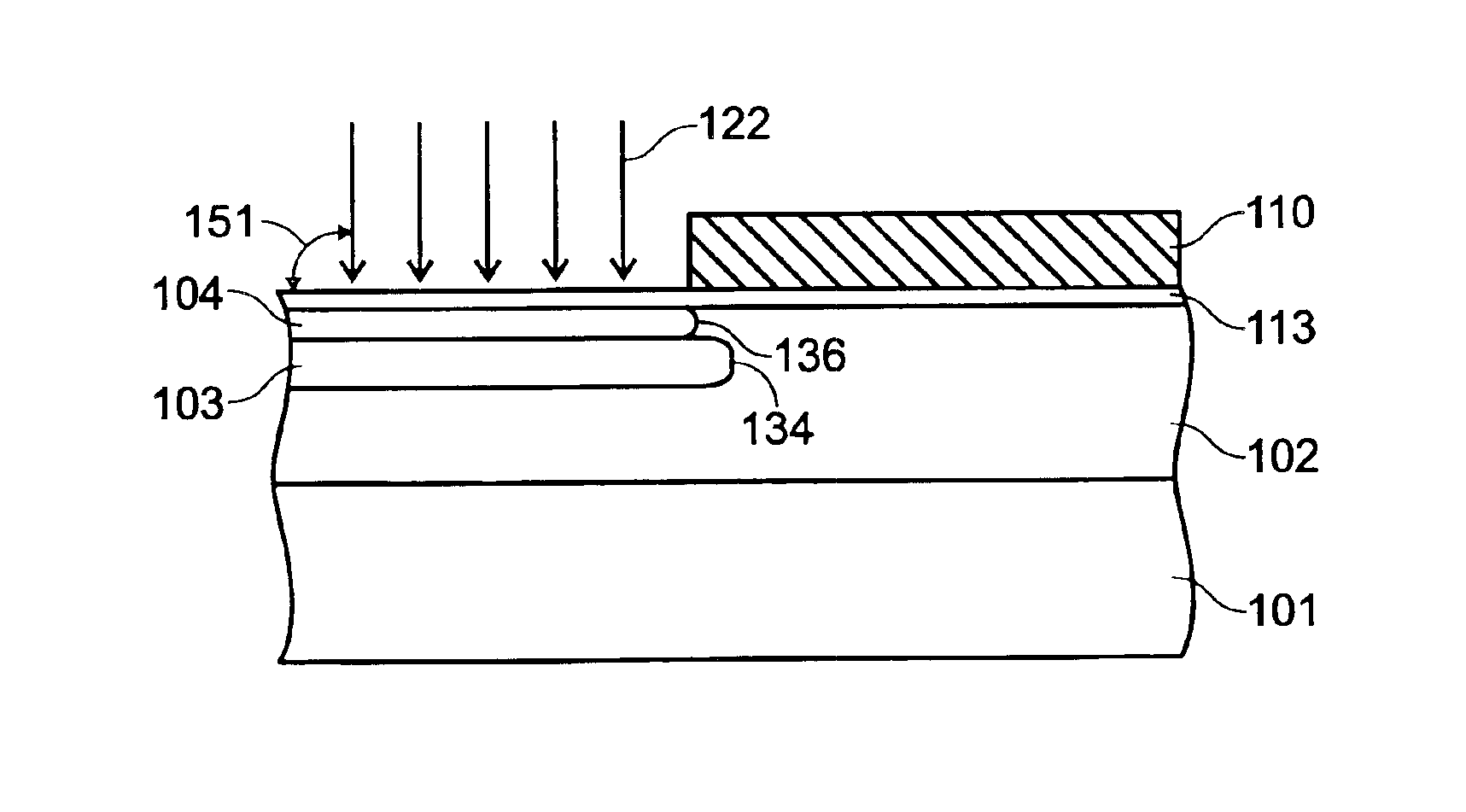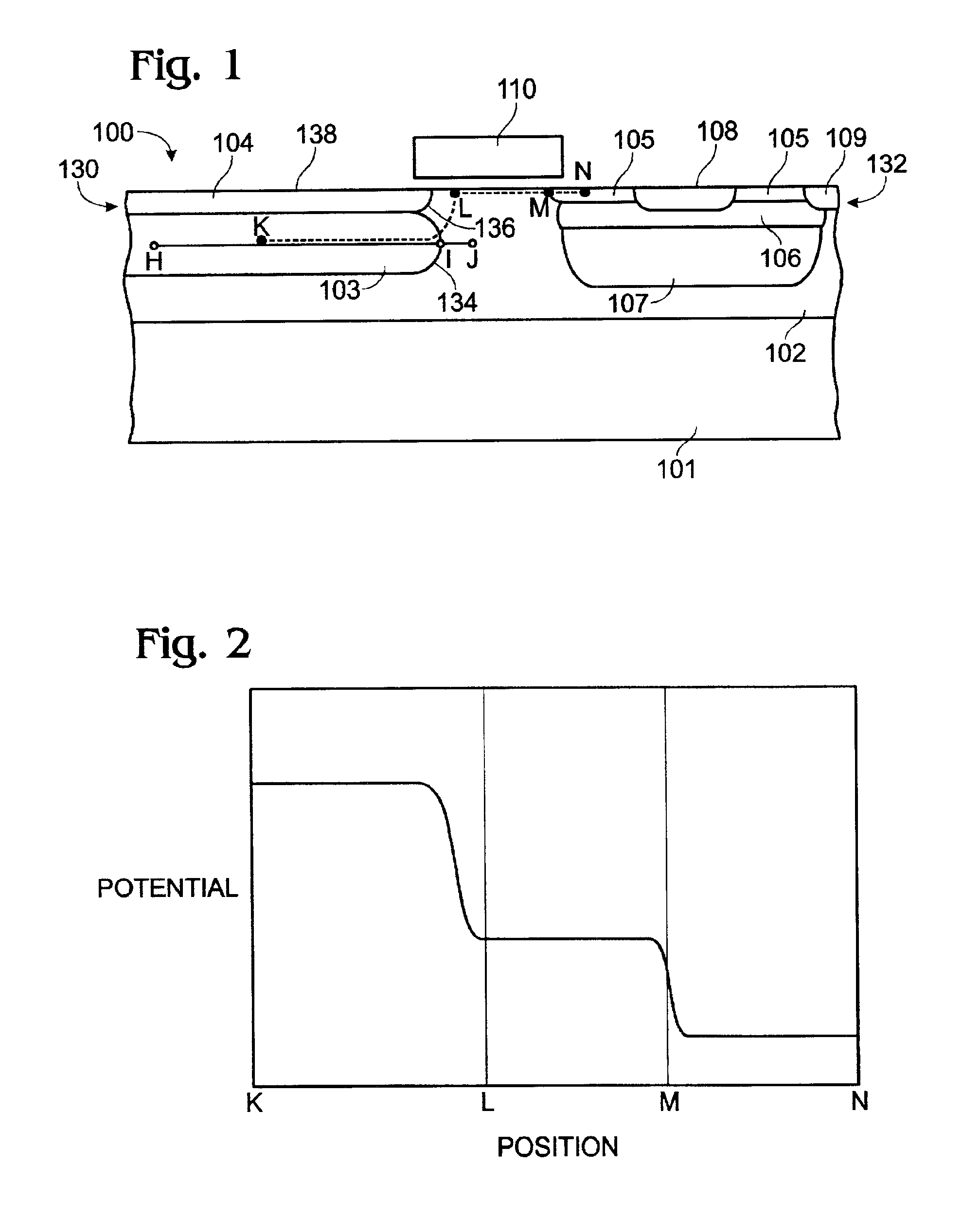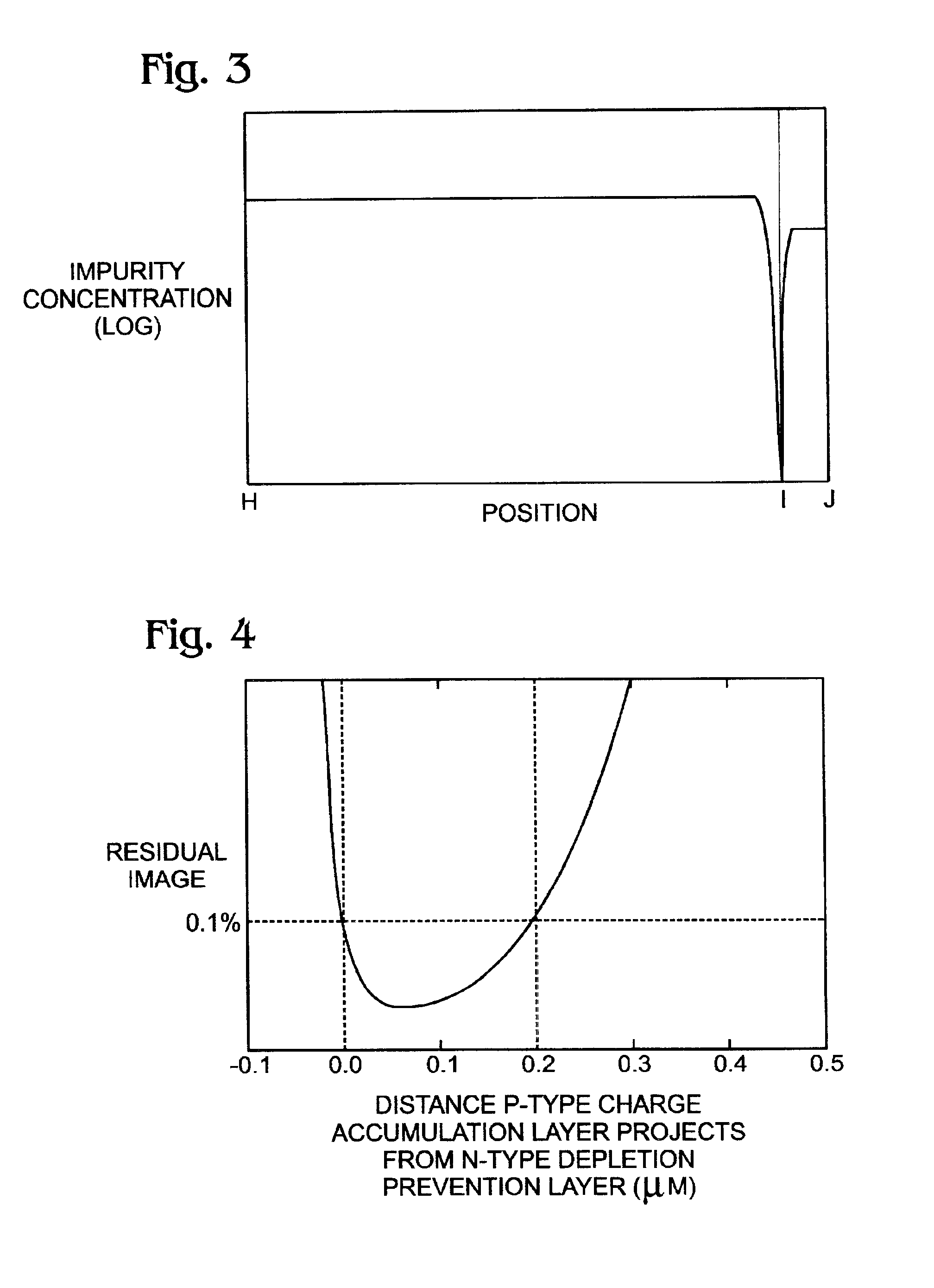Solid picture element manufacturing method
a manufacturing method and solid picture technology, applied in the field of solid picture elements, can solve the problems of residual images, inability to completely transfer charges from the bpd to the jfet, and inability to eliminate the types of potential troughs and spikes simultaneously, so as to increase the sensitivity of the solid picture element accurately, eliminate residual images securely, and improve the effect of sensitivity
- Summary
- Abstract
- Description
- Claims
- Application Information
AI Technical Summary
Benefits of technology
Problems solved by technology
Method used
Image
Examples
specific embodiments
[0088]Next, the solid picture element of the present invention and its method of manufacture are explained in further detail by concrete embodiments.
first embodiment
[0089]This embodiment pertains to the method of manufacture of a solid picture element shown in FIGS. 5a-5c.
[0090]N-type well 102 was formed within P-type semiconductor substrate 101, insulating gate oxide film 113 was formed on the surface of substrate 101, and transfer gate 110 comprised of a substance such as polysilicon was formed on insulating film 113. To form P-type charge accumulation layer 103, boron was implanted by a sloping ion implantation method at a concentration of 1 to 5×1012 cm−2 and an acceleration voltage of 50 keV to 2 MeV, then heat treatment was performed in a nitrogen atmosphere at 800 to 1000° C. for approximately 30 minutes. In some cases, heat treatment may be performed by rapid thermal acceleration.
[0091]Furthermore, to form N-type depletion prevention layer 104, phosphorus was implanted at a concentration of 1 to 5×1013 cm−2 and an acceleration voltage of approximately 80 keV, then heat treatment was performed in a nitrogen atmosphere at 800 to 950° C. ...
second embodiment
[0092]This embodiment pertains to the method of manufacture of a solid picture element shown in FIGS. 6a-6c.
[0093]N-type well 102 was formed within P-type semiconductor substrate 101, insulating a gate oxide film 113 was formed on the surface of substrate 101, and transfer gate 110 comprised of a substance such as polysilicon was formed on insulating film 113. To form P-type charge accumulation layer 103, boron was implant at a concentration of 1 to 5×1012 cm−2 and an acceleration voltage of 50 keV to 2 MeV using transfer gate 110 as part of a mask, then heat treatment was performed in a nitrogen atmosphere at 800 to 1000° C. for approximately 30 minutes. In some cases, heat treatment may be performed by rapid thermal acceleration.
[0094]Following this, transfer gate 110 was oxidized by pyro-oxidation at 900 to 950° C. for 5 to 30 minutes, and an oxide film about 0.1 to 1 μm thick was formed. Furthermore, to form N-type depletion prevention layer 104, phosphorus was implanted at a c...
PUM
 Login to View More
Login to View More Abstract
Description
Claims
Application Information
 Login to View More
Login to View More - R&D
- Intellectual Property
- Life Sciences
- Materials
- Tech Scout
- Unparalleled Data Quality
- Higher Quality Content
- 60% Fewer Hallucinations
Browse by: Latest US Patents, China's latest patents, Technical Efficacy Thesaurus, Application Domain, Technology Topic, Popular Technical Reports.
© 2025 PatSnap. All rights reserved.Legal|Privacy policy|Modern Slavery Act Transparency Statement|Sitemap|About US| Contact US: help@patsnap.com



